
Higher US CR prices inch closer to EU, Japanese tags
US cold-rolled (CR) coil prices continued to tick higher this week, while offshore markets were mixed.

US cold-rolled (CR) coil prices continued to tick higher this week, while offshore markets were mixed.
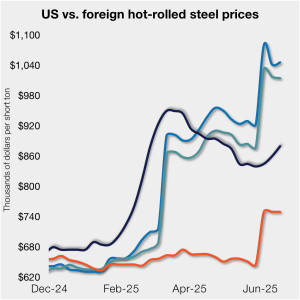
US hot-rolled coil prices crept up again this week but still trail imports from Europe.

Could we see an abrupt shift now that oil prices have spiked higher? Will we see a rebound in the rig count? Will this create a snap-loading effect (think waterski rope), where the industry suddenly does a 180-degree turn? If so, will that bring with it increased demand for steel products used by the energy industry?

Steel prices inched higher again this week across most of the sheet and plate products tracked by SMU.
Cleveland-Cliffs plans to increase prices for hot-rolled (HR) coil to $950 per short ton (st) with the opening of its July spot order book. The Cleveland-based steelmaker said the price hike was effective immediately in a letter to customers dated Monday.
Nucor raised its published weekly spot price for hot-rolled (HR) coil by $10 per short ton (st) on Monday.
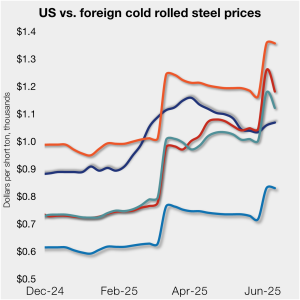
US cold-rolled (CR) coil prices edged up again this week, and most offshore markets moved in the opposite direction. But the diverging price moves stateside vs. abroad did little to impact pricing trends. The bigger impact was from Section 232, which were doubled to 50% as of June 3. The higher tariffs have resulted in […]
Subdued demand has continued to weigh on steel sheet prices globally.

Never a dull moment in today's HR futures market.
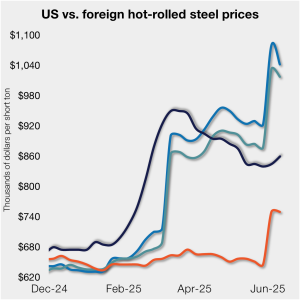
Domestic hot-rolled (HR) coil prices edged up marginally again this week, while offshore prices ticked down.

The price spread between HRC and prime scrap widened in June.

Steel prices climbed for a second straight week across all five sheet and plate products tracked by SMU.

Brazilian pig iron prices fail to rise after ferrous scrap market settle.
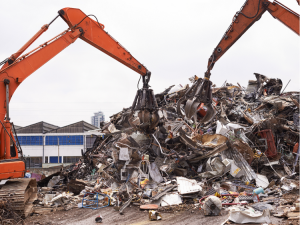
Ferrous scrap prices in the US have remained stable from May to June.
The $20/short ton increase applies to all of the steelmaker’s sheet mills, including West Coast joint-venture subsidiary CSI.
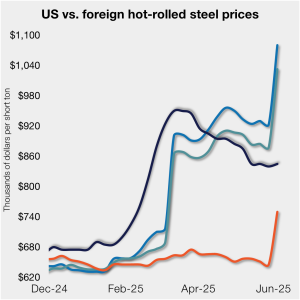
Domestic hot-rolled coil prices edged up marginally this week, while offshore prices ticked down.
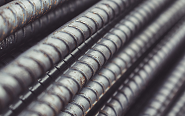
The increases are effective June 6.
This CRU Insight examines how the increase in Section 232 tariffs on steel to challenging levels will lead to significatively higher prices for end consumers in the US market.

US manufacturers brace for the implications spurred by the latest round of Section 232 tariffs.

A fierce flat price rally started this week that saw the nearby months rally by over $120/ short tons, exceeding the contract highs seen in February ahead of the first batch of tariffs.
How is the ferroalloys market in the US faring with the new tariffs.

Following eight consecutive weeks of declines, sheet and plate prices saw some upward movement this week in the wake of last Friday’s Section 232 tariff increase announcement. Gains varied by product.

The speed and scale of recent moves are reminders of just how sensitive HRC futures remain to structural shifts and sentiment cues.
Nucor halted a four-week decline in its spot price for hot-rolled coil this week, maintaining its weekly consumer spot price (CSP) at $870/st.
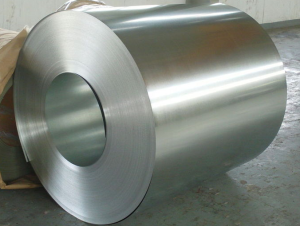
The price premium of galvanized coil over hot-rolled (HR) coil has narrowed over the past two months, resuming the downward trend seen for most of the last year. As of May 27, the spread between these two products is at one of its lowest levels in nearly two years.
CRU analysts discuss how downward pressure on the US premium has persisted due to weakness in key consuming sectors, while concerns over zinc supply have been largely alleviated for the time being.

The evolution of the U.S. HRC futures curve since my last update on April 17 tells a familiar story: fleeting optimism giving way to renewed caution.
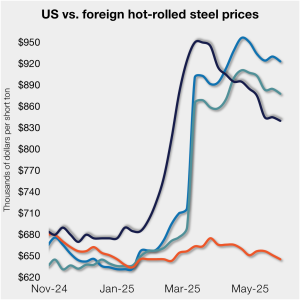
Domestic hot-rolled coil prices moved lower again, maintaining the downward move seen in eight of the last 10 weeks.

The US mills have managed to reduce pig iron prices to correspond with the sharp declines in domestic scrap prices in May.

Sheet and plate prices marginally declined again this week for the second consecutive week, pausing the strong downward trend seen from April through early May.